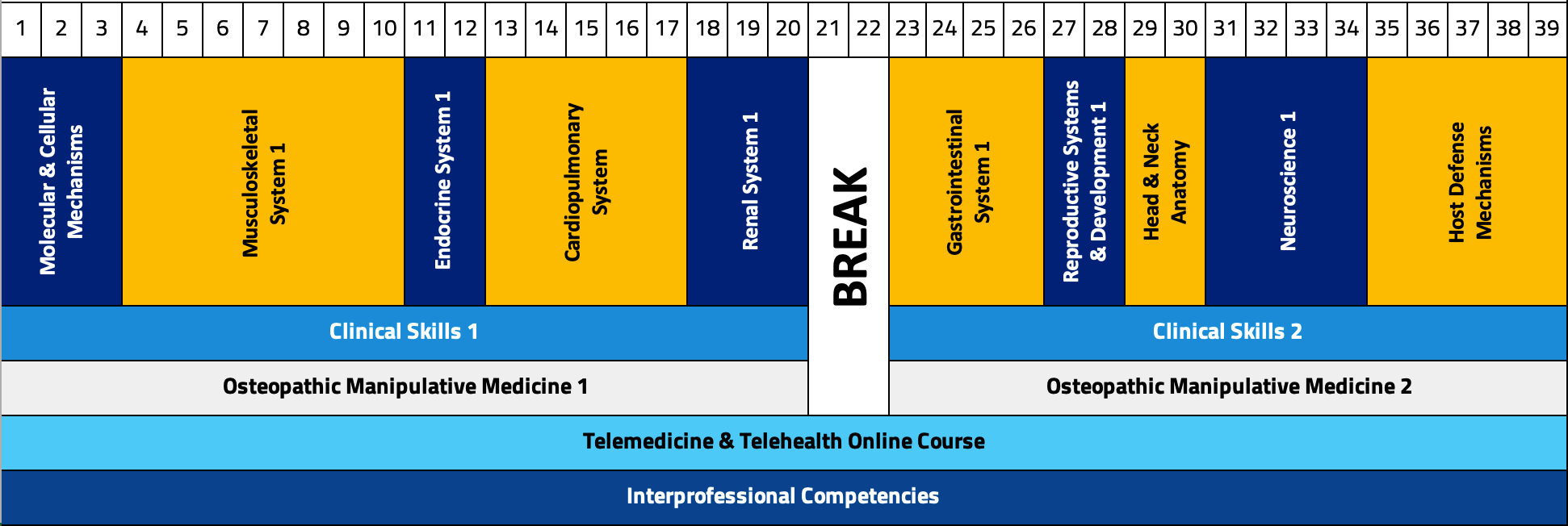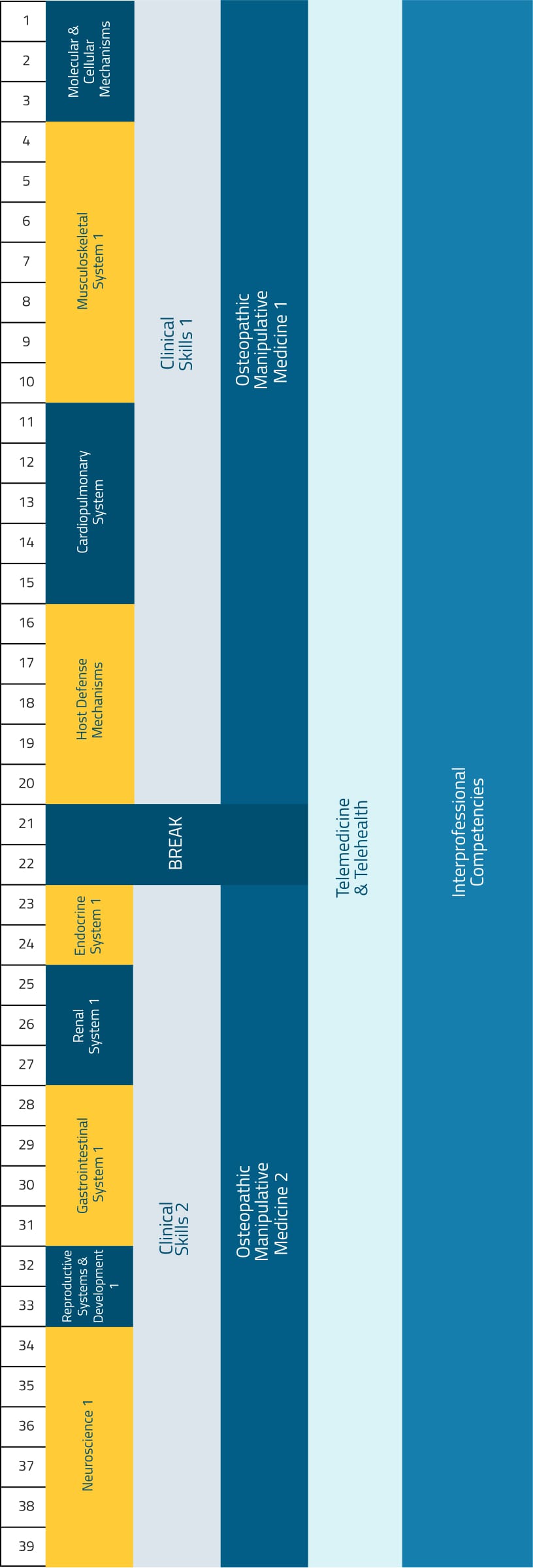DO Curriculum
The osteopathic medicine curriculum is structured to provide you with a strong foundation in both science and clinical knowledge, so you can succeed in providing comprehensive healthcare to your patients. You will integrate your didactic learning in your first year through experiences with patient-actors and simulation technology, as well as in the gross anatomy lab, primary care lab, and osteopathic manipulative medicine lab.
Year One - Begin Your Journey
Your curriculum starts with a focus on the multiple systems of the human body. Your first year teaches by integrating and applying diverse clinical concepts through lectures, laboratory sessions, and an introduction to osteopathic principles and practices.
The curriculum chart is organized by week and provides an approximate schedule. Course order is subject to change.


Year Two - Evolving Your Skills
Your second-year curriculum ranges from behavioral medicine to clinical reasoning. Multiple classes advance the teachings of year one and enhance your understanding of the human body through osteopathic clinical practices.
The curriculum chart is organized by week and provides an approximate schedule. Course order is subject to change.


Year Three - Taking Theory Into Practice
You will start clinicals during your third year. Over the next 22 months, you will do 20 one-month clerkships to provide you with clinical experience and training.
The third-year curriculum includes:
- Family Medicine - 1 month
- Internal Medicine - 2 months
- Obstetrics & Gynecology - 1 month
- Pediatrics - 1 month
- Psychiatry - 1 month
- Surgery - 2 months
- Electives - 2 months
Year Four - Completing Your Discipline
You will have significant input in your fourth-year schedule in order to maximize your internship and residency options.
The fourth-year curriculum includes:
-
Emergency Medicine
-
Clinical Management Review
-
The remaining clerkships are of the student’s choosing.
It is highly recommended that these clerkships are accomplished at a Residency Program site (called an audition or Sub-Internship) to maximize success in the Match.*

